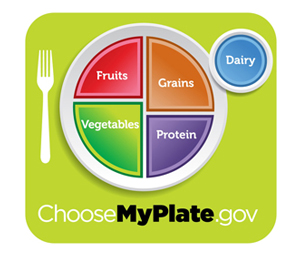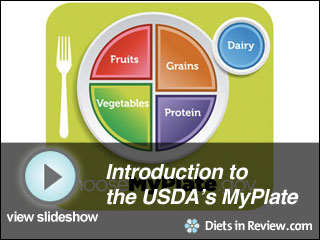 When it comes to eating healthy, it’s never to early to start. Although nutrition can seem like a difficult topic to discuss with a young child, keeping it simple can set them up for a lifetime of healthy choices.
When it comes to eating healthy, it’s never to early to start. Although nutrition can seem like a difficult topic to discuss with a young child, keeping it simple can set them up for a lifetime of healthy choices.
With the recent unveiling of the new USDA food icon MyPlate, starting up nutrition conversations with individuals of any age has become much more simple. In fact, the new icon is so recognizable that even young children can begin to identify what a healthy plate should look like. Educators and parents alike should use this symbol to not only help their children build healthy plates, but to start conversations with them about what eating healthy is and the importance behind it.
To help educators and parents out, many lesson plans exist to incorporate the MyPlate icon into the classroom and the home. To add to this ever-growing list of fabulous resources, please find two additional lesson plans ready for use below. The idea behind these is to make talking about nutrition fun and help children identify how their food choices fit into a well-balanced meal plan.
MyPlate Lesson Plan #1: Make a Plate with MyPlate
Created for Pre-K to 1st Graders
Objective: The child will be able to identify the MyPlate icon and recognize the five main food groups incorporated.
Materials: Paper plates; old magazines, grocery flyers, and/or newspapers; glue sticks; scissors; poster or print outs of the MyPlate icon.
Instructions:
1. Show the children a poster of the MyPlate icon or pass out the print outs to each child. Ask the children to look over the symbol and have them take turns mentioning what details they notice.
2. Ask the children questions based on what they see. Examples would include: “What do you think about how big each section is?” “Do you think any types of foods are missing?” “What do you think lean protein means?”
3. After the children have had an opportunity to point out what they see, pass out the paper plates, scissors, glue, and magazines, grocery flyers, and/or newspapers.
4. Have the children cut out pictures of foods that they enjoy and have them attempt to place them in the appropriate sections of their paper plate. Go around and discuss with the children why they believe the foods they cut out go into certain sections and why.
5. Once the plates are completed, hang them up in the hallway or school cafeteria for a visual reminder of the lesson.
Adapted from: Family Consumer Sciences
 MyPlate Lesson Plan #2: My Family, MyPlate
MyPlate Lesson Plan #2: My Family, MyPlate
Created for 1st to 2nd grade aged children
Objective: The child will be able to identify the MyPlate icon and be able to identify at least one food per food group appropriately.
Materials: MyPlate handout; a blank plate handout; a poster sized version of the MyPlate icon or a drawing of it on the blackboard; large food printouts or drawings of foods from each food group.
Instructions:
1. Review the MyPlate icon with children in class. Explain to the children what each section of the MyPlate represents and discuss what foods may fit into each category.
2. Use a MyPlate poster or draw the MyPlate icon on the blackboard as accurate as possible.
3. Take the large food printouts or draw a few foods from each food group on to the board next to the MyPlate icon.
4. Ask the children to help you match the various foods with the appropriate food group.
5. After this exercise, pass out a MyPlate handout and a blank plate handout to each child. Ask the children to take these home with them and at their next family meal, compare their plate with the MyPlate handout.
6. On the blank plate handout, instruct each child to write or draw each food they are eating into the appropriate food group section of the plate. Parents should be encouraged to participate in this experiment as well, and help their child identify which food goes where.
7. Ask the children to bring in their plate models the following day for further discussion about the MyPlate icon. Be prepared to answer questions about what a portion size is, the possibility of piling up foods, having seconds, and the lack of various food groups from a plate.
Adapted from: PBS.org

